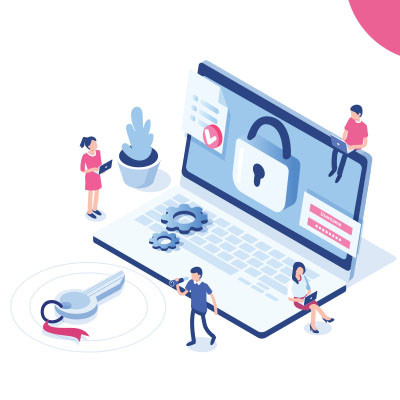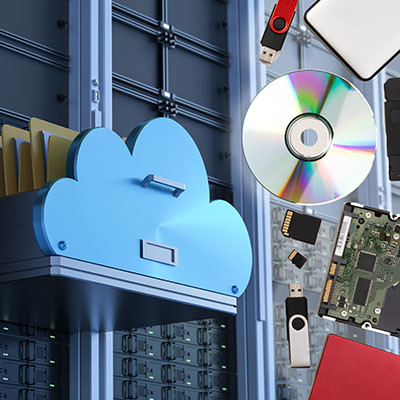The past several years have brought about dramatic increases in internet speeds, further fueling online activity and allowing businesses to innovate in all kinds of ways. Here are five of the best benefits that these increased Internet speeds have brought about for small and medium-sized businesses.
Coleman Technologies Blog
Whether you know how it works or not, your business has an internal network that connects all of its computing infrastructure and resources. Today, we want to take a moment to demystify some of the common networking equipment you might have on-premises and what it all does to contribute to your business’ continued success.
Small businesses, like any other organization, need to protect various types of data to ensure the security and privacy of their operations. The specific data that needs protection may vary depending on the nature of the business, industry regulations, and the types of transactions or customer interactions. Today, we thought we would go through some common data types that small businesses typically need to protect.
Information technology has become a ubiquitous tool employed by almost every organization. The ability to adapt and improve operations has become critical for maximizing productivity and creating an environment conducive to success. The pursuit of innovation, however, often considered essential, may actually hinder productivity. This month, we explore how blindly innovating might not always be the optimal path for steering your business toward success.
As conditions within your business change, it’s likely that your plans might need to change before their end results come to fruition. The decisions you made last fiscal year, or even last quarter, might no longer be relevant due to the rapid pace of evolution that happens with business technology. Let’s go over how you can get the appropriate technology solutions for your business without falling behind.
Small businesses seemingly always need to take a long look at the way they do things because they need to be as efficient as possible to carve out a market share. This often means using technology to make everything work. There are many different types of technologies that can help any SMB build more efficient operations, but the two we will outline in today’s blog, are two technologies that are probably doing the most to help SMBs improve.
While it’s true that technology has become essential for businesses, organizations still often grapple with various technology issues that can impact how they do business. Many times organizations get turned around and it can cause some aspect of their IT to be problematic for them. Today, we look at five common technology issues that businesses frequently face.
Did you know that a lot of technology investments go over budget or don’t necessarily provide the return that was intended? With technology playing such an important role in business, getting the right technology to fit your business is critical to your efficiency efforts. It’s not always as easy as identifying features in a huge software profile or using the cloud for everything. In today’s blog, we offer five useful tips to help you make informed decisions about your business’ technology.
Cloud computing has undeniably become one of the most important tools a business can use. Most businesses use some form of cloud computing, with 4-of-5 using multiple SaaS applications, virtualized computing environments hosted in the cloud, or other cloud-based tools. Let’s take a look at some of the benefits of using cloud computing.
Businesses need money to operate and sometimes it can be awfully difficult to find enough financial wiggle room to do the things that you want to do after all the bills are paid. Finding the right technology can help. By building a more efficient business, tasks take fewer resources to accomplish and that provides opportunities such as better revenue generation or the ability to reallocate certain resources to better fit your organization’s immediate goals. Let’s take a look at some tech that can help achieve this goal.
Businesses create and need to handle more data than ever before. In the past, this would mean that there would be a lot of wasted data. Today’s document management system can completely revolutionize your business. Let’s take a look at the steps that go into creating a comprehensive digital document management system.
Your customers expect not to be inconvenienced when doing business with your organization. Small businesses can use new technology to meet these expectations by offering online ordering, mobile apps, and e-commerce platforms. Such innovations not only improve the customer experience but also expand a business' reach. Let’s look at some of the ways new technology can improve your business.
Technology is an incredibly powerful factor when it comes to your business operations, so we wanted to share how a solid IT strategy can make a significant impact on your company. We’ll explore how poor IT implementation and strategy can affect performance, as well as what you need to do to prioritize your IT.
Today’s businesses are heavily reliant on technology to streamline operations and do more to enhance workforce productivity. With the multitude of technology options available, however, finding the right solutions for your business can be more difficult than it seems at first glimpse. Let’s take a look at how technology professionals can help you navigate the technology landscape and find solutions that align with your business needs.
All small business owners are searching for ways to ensure their organization's long-term success. The truth is that it takes a dedication to building strategies that allows your business to get in the fast lane and stay there; and these strategies aren’t always easy to find. Let’s discuss how leaning into solid technology investment can help bring you closer to your goals.
With organizations running on technology, it is important that it is reliably managed. It’s also important that your organization has the technology in place that will help your team be the most productive and that will keep your data secure. The best way to accomplish this is with help from certified and knowledgeable IT technicians.
The threats for businesses to get hacked or deal with data breaches of some type are more pressing now than at any other time in the digital age. It’s as if there are thousands of cat burglars on the prowl looking for a way into your business. If one of them is successful, it can bring some severe consequences for your business including financial loss, reputational damage, and even legal issues. In this week’s blog we will go through some of the actions you need to take in the case of a network breach.
Most businesses who utilize the cloud report that they have managed to cut costs while still getting the resources they need to perform to spec. Businesses can use the cloud for processing and storing data, as well as application deployment, making it a very dynamic solution to a business’ needs. However, you cannot make decisions based on cost alone. Here are some other factors to consider.





















